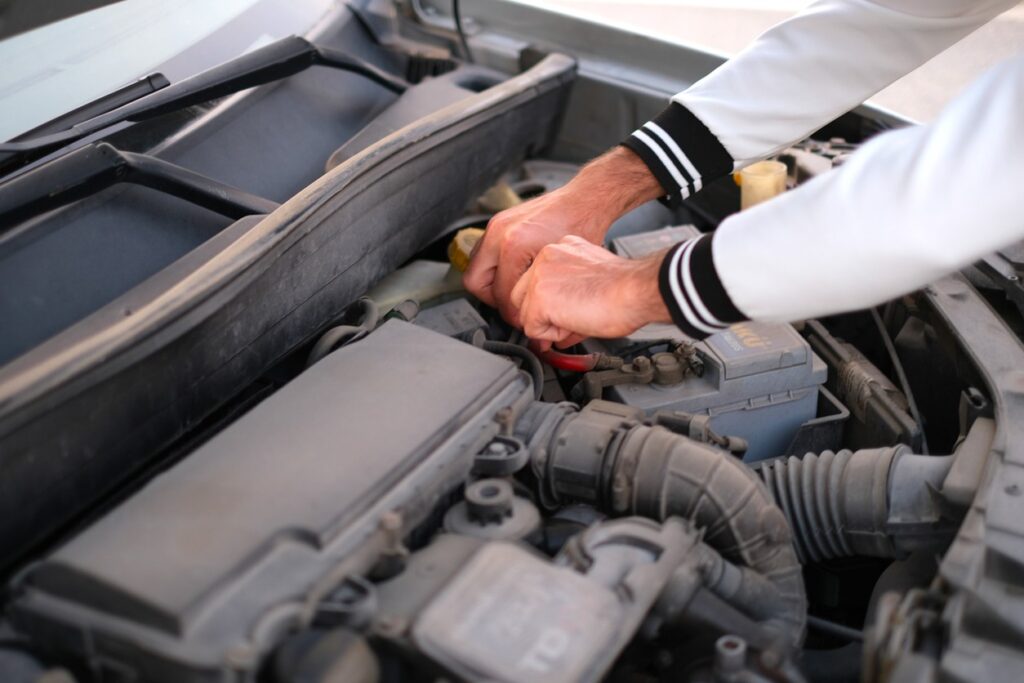Under Hood Components: Engine, Motor, and More
When you receive regular maintenance on your car, like oil changes and tire rotations, most mechanics also perform a multi-point inspection. And most likely, you trust them to tell you if something needs replacing or anything is wrong with those weird boxes, wires, and tubes under the hood.
In case of a roadside emergency—or to simply better recognize the ways auto parts work together—it’s beneficial to be equipped with some basic knowledge the next time you take a peek under the hood of your car. Whether you’re an aspiring DIY mechanic or you recoil at the thought of operating on your vehicle’s metal organs, browse this beginner’s guide to car parts from Kennedy Transmission.
Engine
Let’s start with one we hope you know. It’s that hunk of metal that puts the “mobile” in “automobile” and keeps its wheels turning—the heart of the car, if you will. The engine is the largest apparatus that is generally located at the center of everything else. For more information about your specific engine, your car’s user manual is a fantastic resource.
Alternator
If your car won’t start, it’s essential to determine whether the issue is with the battery or the alternator. Alternators look like a wheel with slits with turning gears on the side, and they produce electrical power that recharges the battery and keeps the engine running.
Battery
Depending on where yours is located within the engine compartment or if there is a protective panel covering it, the battery is pretty easy to spot (often in a corner). It’s a rectangular box with two differently colored terminals on each side: red for positive and black for negative.
Belts
Belts help manage various engine operations, such as alternators, air conditioners, and pumps. Many newer car models feature a single serpentine belt that wraps around the engine’s pulleys; one side is flat, while the other has several ribs.
Car Engine Cylinders and Spark Plug Wires
Engines can contain varying numbers of cylinders, which are units that transform gasoline into power. Four, six, or eight cylinders power most modern vehicles, but there are also cars with fewer or more cylinders. Usually, each cylinder has its own spark plug—which assists the ignition system—attached to wires.
Piston and Crankshaft
Pistons are housed in the cylinders, are adjacent to each other on the crankshaft, and move upward and downward to create movement in the crankshaft. The crankshaft generates rotational energy, allowing your wheels to propel the vehicle forward.
Oil Filler Cap and Oil Dipstick
If you change your engine oil, this is where it’s changed and refilled. The fill cap is located on top of the engine and may be labeled “oil fill,” “engine oil,” or with an oil can icon. There will also be a dipstick for checking the oil levels, which should sit between the min and max marks.
Radiator
The radiator is a heat exchanger used for cooling and regulating engine temperature. It is the large panel that sits upright behind the front grille of the car. Do not remove the radiator cap after your car has been or is still running! This is hazardous because cooling systems are under immense heat and pressure.
Auto Transmission
The transmission lies on the rear side of your engine and beneath other parts; therefore, it’s not easily visible. The dipstick is located next to it for checking the transmission fluid level.
Reservoirs
Brake Fluid Reservoir
The brake fluid reservoir is located beneath the hood, in front of the steering wheel, and is usually transparent, allowing for quick checking of fluid levels without opening it. For a smooth braking system, it’s essential to have this filled with the proper amount of fluid.
Coolant Reservoir
Located near the radiator, coolant reservoirs contain the coolant fluid and are generally composed of translucent white plastic. Proper distribution of this fluid is integral to preventing damage to your car due to overheating.
Power Steering Fluid Reservoir
Power steering fluid reservoirs are frequently found on the passenger’s side of vehicles, though they can also be on the driver’s side. Attached to the cap, there will be a small dipstick. This fluid ensures the wheel turns smoothly, so if you’ve been feeling more resistance than usual while making turns in your vehicle, check its fluid levels or take it to a technician.
Windshield Washer Fluid Reservoir
Perhaps the simplest DIY task for car owners, it’s crucial to know where to refill your windshield wiper fluid. After opening the hood, look around the sides until you see a reservoir with a symbol of a windshield or liquid droplets on its cap, which is usually blue.
Find Out Why Your Check Engine Light Is On at Kennedy Transmission
As a driver, a basic understanding of the parts within the engine compartment that keep your vehicle running like a well-oiled machine—literally—is invaluable. Whether you’re a resident needing auto service in Minnesota or just passing through, Kennedy Transmission offers a wide range of services to get you back on the road quickly and safely.

